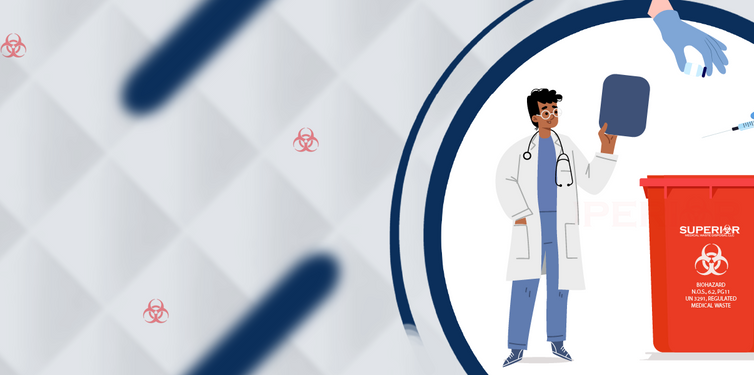What is the difference and what kind is your facility producing?
A biological hazard, or biohazard, is a biological substance that poses a threat to the health of living organisms, primarily humans. This could include a sample of a microorganism, virus or toxin that can adversely affect human health. A biohazard could also be a substance harmful to other animals. You will notice the universal sign for biohazard on DOT regulated medical waste containers such as the animated red container seen below. This marking is to warn people of the potentially dangerous biohazard located in the area.
Medical waste a subset of wastes generated at health care facilities, such as hospitals, physicians’ offices, dental practices, blood banks, and veterinary hospitals/clinics, as well as medical research facilities and laboratories. Generally, medical waste is healthcare waste that that may be contaminated by blood, body fluids or other potentially infectious materials and is often referred to as regulated medical waste.
In short, biohazard waste and medical waste are the same exact thing. They are wastes placed in sharps containers, cardboard boxes, biohazard bags, and red bins that hold potentially dangerous and infectious waste.
Many government agencies regulated the production, transportation, and treatment of this waste stream because of the potential threat it can cause many people if not properly hade led from cradle-to-grave. A few agencies that can provide more information on biohazard / medical waste : DOT, EPA, OSHA, DEQ, and the EGLE.
